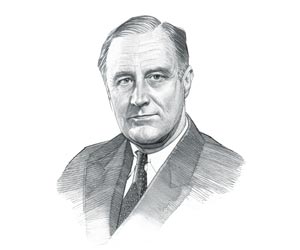|
|
|
|
|
The result was considered a tactical victory for the Japanese and a strategic victory for the US and Australia. The Japanese invasion plan to occupy Port Moresby in New Guinea was repelled.
Battle of the Coral Sea Facts
for kids:
Background History
Battle of the Coral Sea Facts
for kids:
The Japanese split their forces
Battle of the Coral Sea Facts
for kids:
The Japanese War Plan Facts about
Battle of the Coral Sea The Coral Sea is located in the South Pacific between New Guinea and the Solomon Islands, 500 miles northeast of Australia. The US had broken the Japanese Navy’s secret code and knew of their plans. Admiral Admiral Chester Nimitz sent two US aircraft carriers, the Lexington and the Yorktown with their respective task force to intercept the Japanese. Both sides launched all out air attacks on each in a vast area in what became known as the Battle of the Coral Sea. The ships engaged in the conflict over the four-day period between May 4-8, 1942 were, in order of size, battleships, aircraft carriers, cruisers and destroyers. The aircraft carriers had to be protected by the other ships from attack by enemy aircraft, launched from enemy aircraft carriers. The main Japanese groups consisted of:
The Allied groups consisted of:
Task Force 17 consisted of Yorktown (carrier), Astoria (heavy cruiser), Chester (heavy cruiser), Portland (heavy cruiser), Hammann (destroyer), Anderson (destroyer), Russell (destroyer), Walke (destroyer), Morris (destroyer) and Sims (destroyer) Task Force 11 consisted of Lexington (carrier), Minneapolis (heavy cruiser), New Orleans (heavy cruiser), Phelps (destroyer), Dewey (destroyer), Farragut (destroyer), Aylwin (destroyer) and the Monaghan (destroyer) The Japanese force included the aircraft carriers ‘Shokaku’, the ‘Zuikaku’ and the 'Shoho'. The Japanese attack on Port Moresby, codename ‘Operation MO’, was important as its success would isolate Australia and New Guinea and could then be used as a platform to attack Samoa and Fiji. Port Moresby was a key city on the southern coast of New Guinea. The Allied force had 128 carrier aircraft and the Japanese had 127 carrier aircraft The Battle of the Coral Sea began on May 4, 1942 when Japanese naval forces invaded Tulagi in the southern Solomon Islands. The USS Yorktown launched 3 air strikes against the Japanese in Tulagi, hitting a destroyer and several smaller ships. The Yorktown then moved south to rejoin the USS Lexington May 5, 1942 was dogged by terrible weather preventing either side from locating the enemy air carrier forces. The Allied force received intelligence that the Japanese intended an imminent attack on Port Moresby. On May 6, 1942 the Japanese launched further attacks on the Solomon Islands and enter the Coral Sea early in the day. The American carriers are located 70 miles away and the two sides did not come into contact On May 7, 1942 Japanese surveillance aircraft sight an American aircraft carrier and the Japanese begin a raid on the Allied Forces. The HMAS Australia (cruiser) is hit, but not sunk, the USS Sims (Destroyer) is hit by enemy planes but not badly damaged. The Allies respond to the attack by sinking the Japanese aircraft carrier, the Shoho On May 8, 1942 the main Battle of the Coral Sea was fought. The Allied forces and Japan bombard each other with torpedoes and bombs. The Japanese lost ships and 69 aircraft and the Allie losses included the USS Lexington aircraft carrier which was sunk during the battle and 92 aircraft were destroyed. A total of 966 men fighting for the Allies were killed during the Battle of the Coral Sea. The Japanese lost 656 men. The Battle of the Coral Sea was a draw, but it stopped the Japanese from invading Port Moresby in New Guinea and threatening Australia. Many people refer to the conflict as the ‘Battle that saved Australia’. The Battle of the Coral Sea was also important as it was the first sea battle in history when neither opposing sides' ships sighted or fired directly upon the other The Japanese went on with it plans to attack Midway... |
| US American History |
| 1929-1945: Depression & WW2 |
|
|
|
|
|
First Published2016-04-19 | |||
|
Updated 2018-01-01 |
Publisher
Siteseen Limited
| ||
|
|

